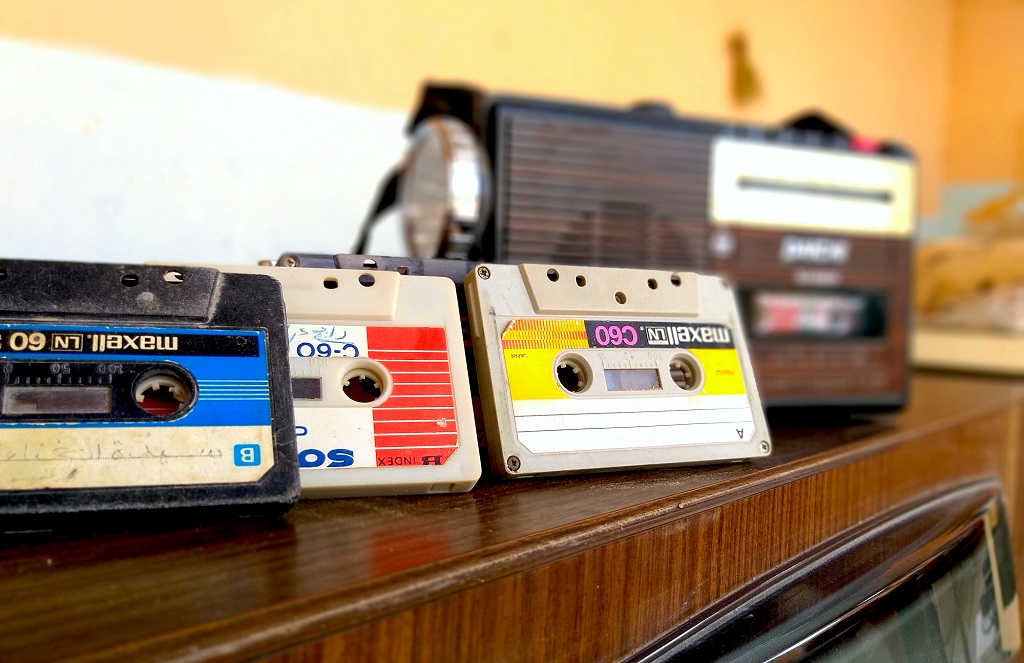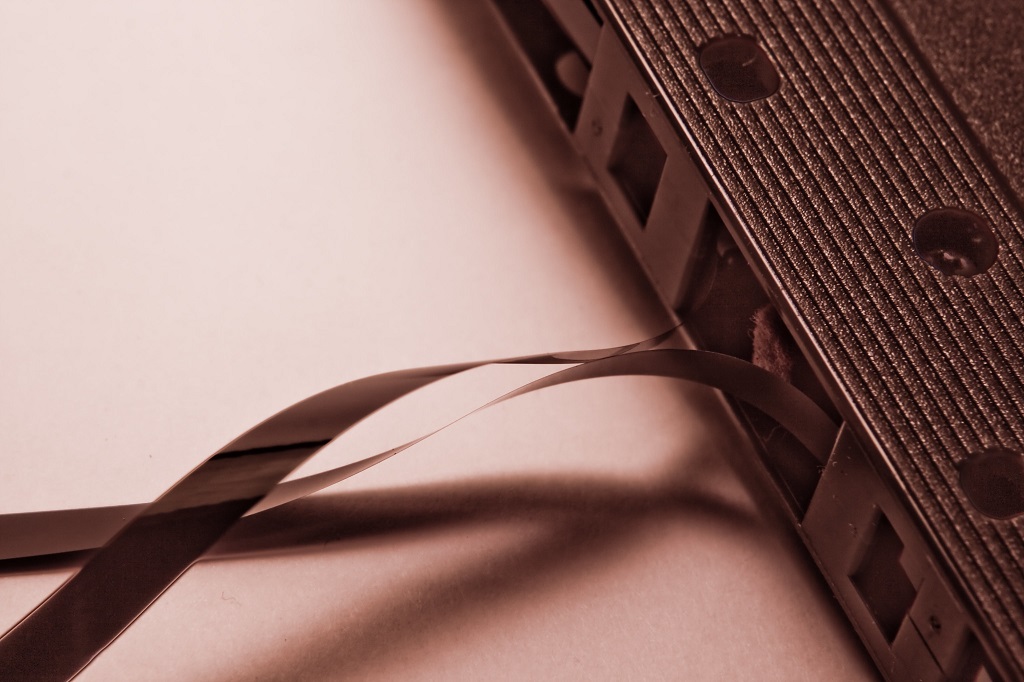
Photo Ar Meftah / Unsplash
When did audio cassettes appear
The format appeared in 1963. It was offered by Philips. The company's engineers wanted to introduce an alternative to complex " bobbins ". The first cassettes of the company were intended for voice recorders and were unsuitable for recording music. However, everything changed quite quickly.
In the early 70s, Dolby introduced Noise Reduction technology. She masked the film noise. New materials have also been developed that increase the strength and reliability of magnetic tape. These solutions have enhanced stereo sound quality. At the same time, Philips did not begin to license the production of cassettes, and the media quickly became mass.
As a result, budding musicians who could not even dream of signing contracts with labels received a tool for distributing records. American church choirs and rock garage groups recorded their work and distributed it to parishioners and fans across the country. The media body was strong enough to withstand the ride in a mailing envelope. This feature also influenced its popularity.
Another factor that influenced the popularity of cassettes is the appearance of personal players. The first commercially successful device was called the Sony Walkman TPS-L2 . And although the price of the device was quite biting - 33 thousand Japanese yen (approximately $ 300 in terms of modern money) - its sales amounted to several tens of thousands of copies.
So, audio cassettes have become the leading portable format of the analog era. Their sales grew until the early 1990s. So far, disks and CD players have not appeared on the market.
Format drop
In 1982, Polygram, a German record company, commissioned Philips to produce the world's first music CD. He recorded the album ABBA - " The Visitors ". This event spurred mass production of disks. At the same time, Sony CDP-101 CD players entered the market.
Despite the fact that ABBA became the first "digital" group, the drive owes its popularity among the public to the work of "Brothers in Arms" from Dire Straits. According to The Guardian, only after him people began to buy players and CDs - this was in 1985. By 1988, disc sales exceeded vinyl sales.
Three years later, audio cassettes suffered a similar fate.
By the beginning of zero, the share of cassettes in the global audio media market did not exceed 5% .
Are the cassettes coming back?
The last few years, the media write about the revival of the media, backing up information with statistics. According to Nielsen, in 2016, sales of cassettes increased by 74% in the United States. In 2018, in the UK this indicator increased by 125%. A number of analysts say that in the near future this trend will only continue to gain momentum.
But there is an opinion that talking about the revival of the format is premature. It is still a niche. Although in England they have sold more audio tapes than in the past 15 years, the total circulation is small - it did not exceed 50 thousand records. At the same time, the format did not really go anywhere. He remained popular in American prisons. Prisoners are allowed to use special “safe” cassettes that cannot be turned into weapons (such as CDs).
Cassettes are also common in African and other countries with a hot and dusty climate. Magnetic film is better than other formats and drives in difficult conditions.

Photo by Andrew Malone / CC BY
As an additional argument in favor of the return of audio cassettes, the media cite the resulting shortage of magnetic film. But the reason for this lies not only in increased demand. Just in the world there are only two factories for the production of magnetic tape for cassettes - in the USA and France. Recent factories closed or redesigned more than ten years ago when the format went out of use due to the CD. Although last year the company National Audio Company, specializing in audio cassettes, still began to build a new factory.
Today, many artists release their albums on cassettes. In the list of best-selling releases are the new items by Kylie Minogue, Ariana Grande, Twenty One Pilots, Thirty Seconds To Mars and many others. Justin Bieber's album even came out on tape - it was sold at Urban Outfitters clothing stores. However, there is an opinion that soon the “trend on film” will be forgotten.
Western culture is experiencing a moment of collective nostalgia for the 80s, of which cassettes are an integral element of aesthetics. They featured on television hits such as The Stranger Things and The 13 Reasons Why. It takes on cassette aesthetics and the vaporwave genre, which also refers to the cultural phenomena of the 80s and puts retro pop in a modern context.
When the fashion for this period passes, then the sales of cassettes will again decline. However, they will surely remain a niche format that is popular with enthusiasts. They will continue to chat online, share rare releases, and organize like-minded meetings.
Additional reading from our blog:
 “Between Vinyl and Cassette”: The History of Tefifon
“Between Vinyl and Cassette”: The History of Tefifon
 The battle for the format: reel vs cassette vs vinyl vs CD vs HiRes
The battle for the format: reel vs cassette vs vinyl vs CD vs HiRes
 What noise helps to relax, and yet - prevents hearing loss in severe accidents
What noise helps to relax, and yet - prevents hearing loss in severe accidents
 Why did vinyl come back, and how are streaming services related to this?
Why did vinyl come back, and how are streaming services related to this?
 What is musical programming - who does it and why
What is musical programming - who does it and why
 A plate as a gift or free music for lovers of cola and ready breakfasts
A plate as a gift or free music for lovers of cola and ready breakfasts